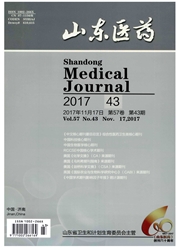

 中文摘要:
中文摘要:
目的 研究昆明小鼠眨眼条件反射延迟/痕迹任务模型建立过程中听觉惊吓反射(ASR)与眨眼条件反射(CR)的行为学特征参数与变异.方法 15只健康昆明小鼠随机分成3组:单任务延迟眨眼条件反射(DEBC)组(n=5);单任务痕迹眨眼条件反射(TEBC)组(n=5);双任务延迟/痕迹组(n=5).采用不同音频( TEBC 2KHz,DEBC1KHz)的正弦波纯音作为条件刺激(CS),声音强度为85 dB.以100ms 束状氧气流作为非条件刺激(US)进行CS-US配对训练,观察实验各组行为学参数.结果 经过10d配对训练,惊吓反射率(ASR%):单任务组[第10天ASR%分别达到(38.00±8.64)%和(38.55 ± 12.41)%,时间效应F=4.574,P=0.008;组间效应F=2.021,P=0.193))与双任务组[第10天ASR%分别达到(47.95±14.23)%和(62.01 ±9.03)%,时间效应F=5,547 P=0.013;组间效应F=0.738,P=0.415))均随训练天数增加显著增加.习得率(CR%):单任务组[第10天CR%分别达到(45.4±5.39)%和(65.6±6.77)%,时间效应F=9.558,P=0.000;组间效应(F=5.117,P=0.054)与双任务组(第10天CR%分别达到(57.66±4.34)%和(77.35±7.36)%,时间效应F=7.750 P=0.002组间效应F=1.449 P=0.263))均随训练天数增加显著增加,两种模式间习得率未见明显差异.峰幅度(AP):DEBC组随训练天数增加而增加(时间效应F=2.679,P=0.017),双任务组随训练天数增加而增加(时间效应(F=3.452,P=0.034).峰潜伏期(TP)无任何显著差异.结论 昆明小鼠可以成功建立单任务与延迟/痕迹双任务眨眼条件反射,虽然行为参数表现出一定程度的变异,但采取相关措施可予以控制.
 英文摘要:
英文摘要:
Objective To investigate the characteristic parameters and variation of acoustic startle reflex (ASR) and conditioning response (CR)during the acquisition of delay-trace eyeblink conditioning.Methods 15healthy Kunming mice were randomly divided into 3 groups:single-task DEBC group ( n =5 ) ; single-task TEBC group ( n =5) ; dual delay/trace group ( n =5).Three groups received paired training of tone conditioned stimulus(CS)in different audio frequency (TEBC groups:2KHz; DEBC group:1KHz) and a 100 ms comeal oxygenpuff unconditioned stimulus(US).Then observed the characteristic parameters of ASR and CR.Results After pairing training for 10 days,ASR rate( ASR% ) of single-task groups ( 10th day (38.00 ± 8.64) % and (38.55 ±12.41 ) % respectively,time effect:F =4.574,P =0.008 ; group effect:F =2.021,P =0.193 ) and dual delaytrace group ( 10th day (47.95 ± 14.23 ) % and (62.01 ± 9.03 ) % respectively,time effect:F =5,547 P =0.013 ;group effect:F =0.738,P =0.415) changed significantly with the following training but between single-task groups or dual delay-trace group.CR rate ( CR% ) of single-task groups ( 10th day were (45.4 ± 5.39) % and (65.6 ± 6.77) % respectively,time effect:F =9.558,P =0.000 ; group effect:F =5.117,P =0.054 ) and dual delay/trace group ( 10th day (57.66 ± 4.34) % and (77.35 ± 7.36) % respectively,time effect:F =7.750,P =0.002 ;group effect:F=1.449,P=0.263 ) showed obvious change with the following training but between singletask groups or dual delay-trace group.Peak amplitude of single-task DEBC group ( time effect F =2.679,P =0.017 ) and dual delay-trace group ( F=3.452,P=0.034 ) had increased significantly with the following training.Peak latency showed no obvious change.Conclusion Dual delay-trace conditioning procedure of classical eyeblink conditioning and single-task can be successfully established in Kunming mice.Although there are some variations,those can be cont
 同期刊论文项目
同期刊论文项目
 同项目期刊论文
同项目期刊论文
 期刊信息
期刊信息
